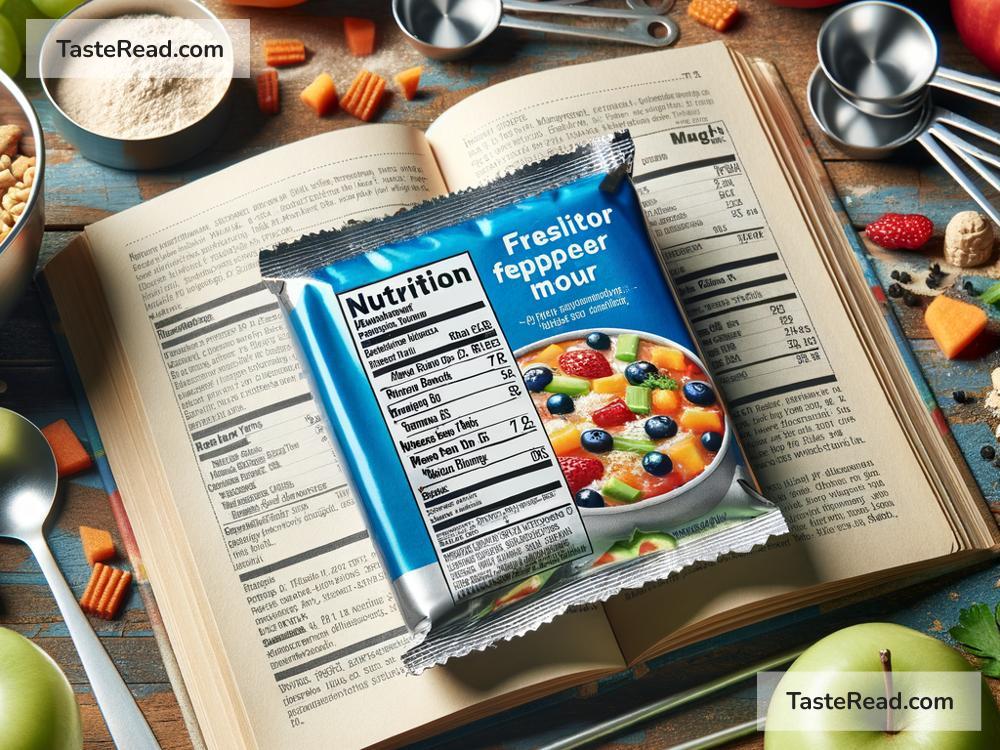The Impact of Food Labeling on Nutrition: Understanding What’s on Your Plate
Have you ever picked up a box of snacks or a bottle of juice and looked at the label on the back? That small label holds a lot of information about what you’re eating or drinking. Food labels may seem like a minor detail, but they play an important role in how we make decisions about our health and nutrition. In this blog, we’ll explore how food labeling impacts what we eat and why it matters for our well-being.
What Is Food Labeling?
Food labeling includes the detailed information on the packaging of food and drinks. It usually lists the ingredients, nutritional values such as calories, protein, fat, and sugar, and additional details like allergens and serving sizes. Many labels also include certifications, such as “organic,” “non-GMO,” or “gluten-free.”
The goal of food labeling is simple: to help consumers make informed choices about what they eat. By providing clear and accurate information, labels empower people to understand exactly what they’re putting into their bodies.
Why Food Labeling Matters for Nutrition
Food labels are like a roadmap for healthy eating. Without them, it would be hard to know whether a snack is packed with sugar or loaded with nutrients. Here are a few reasons why food labeling is critical for nutrition:
-
Encourages Healthier Choices
When you understand what’s in your food, you’re more likely to make better choices. For example, if you’re trying to cut back on sugar, you can quickly compare two products and choose the one with less sugar by checking the label. Simple tools like the “Nutrition Facts” panel make this possible. -
Helps Manage Diets
Labels are especially helpful for people with specific dietary needs. For example, someone with a gluten allergy can look for products labeled “gluten-free.” Similarly, people managing health conditions like diabetes can monitor carbohydrate and sugar intake by reading the label. -
Increases Awareness About Nutrients
Many people don’t actually know how much fat, fiber, or protein they should consume every day, or why these nutrients matter. Food labeling shines a light on these essential factors, reminding people to pay attention to their overall nutrition.
Challenges with Food Labels
While food labeling has many benefits, it’s not perfect. Some labels can be confusing or misleading, which can make it harder for people to make healthy choices. Here are a few common issues with food labels:
-
Misleading Claims
Food packaging often uses buzzwords like “natural,” “low-fat,” or “healthy.” While these terms sound good, they don’t always mean what we think they do. For example, “low-fat” products can still be high in sugar, and “natural” doesn’t always mean the food is free from artificial additives. -
Complicated Ingredients
Sometimes ingredient lists use scientific names or unfamiliar terms that can confuse consumers. If you don’t know what “ascorbic acid” or “maltodextrin” is, it becomes hard to understand what you’re eating. -
Serving Size Tricks
Labels often list nutrition information based on small serving sizes. For example, a bag of chips may appear to have 150 calories per serving, but the whole bag might have three servings and 450 total calories. If you eat the whole bag, you could consume way more calories than you planned without realizing it.
How to Read Food Labels Like a Pro
Learning how to read food labels is an easy way to improve your nutrition. Here are a few tips to help you make smarter decisions:
-
Start with the Serving Size
Always check the serving size first. This tells you the amount of food the nutrition facts are based on. If you eat more than the serving size, you’ll need to adjust the numbers. -
Look at Calories and Nutrients
Pay attention to the number of calories per serving, especially if you’re trying to manage your weight. Also, check for nutrients you want to limit (like added sugars and saturated fats) and nutrients you want to increase (like fiber, protein, and vitamins). -
Watch for Added Sugars
Added sugars are common in snacks, drinks, and processed foods. Too much sugar can lead to health issues like obesity and heart disease, so aim for foods with lower amounts of added sugars. -
Be Critical of Marketing Words
Don’t just trust words like “organic” or “low-fat” at face value—read the full label to understand what you’re really getting. These terms can be helpful, but they don’t always paint the whole picture.
The Bigger Picture: How Food Labels Shape Our Choices
Food labeling doesn’t just affect individuals—it also shapes society’s approach to health. Governments and organizations use food-labeling laws to encourage better eating habits. For example, many countries now require labels to include warnings for high salt, sugar, or fat content to help fight obesity and chronic diseases.
At the same time, food companies use labels to attract customers. While this can lead to misleading claims, it also pushes brands to create healthier products. If enough people start choosing snacks with less sugar or drinks with fewer calories, companies often adjust their recipes to meet the demand.
Conclusion: Knowledge Is Power
Food labels are more than a list of numbers and ingredients—they’re a tool for better living. The information on those labels can help you take control of your health, manage your diet, and understand nutrition better. But, like any tool, you need to use it wisely. By learning how to read labels and make informed choices, you can turn your next trip to the grocery store into a step toward a healthier lifestyle.
Remember, knowledge is power. The next time you’re at the store, take a moment to check the label before tossing a product in your cart. Your health will thank you!


